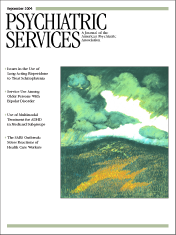Substance Use and Abuse: Cultural and Historical Perspectives
The use and abuse of drugs is widely recognized as a universal practice that has been in existence since the beginning of time. Substance use has differed dramatically over time and across cultures in terms of accepted practices, beliefs about harm, and patterns of use. In the formulation of theories for understanding drug use and creating the best prevention and treatment methods, mainstream biopsychosocial models are most often used. In Substance Use and Abuse: Cultural and Historical Perspectives, Russil Durrant and Jo Thakker suggest that cultural-historical perspectives on drug use enrich the current understanding of why people use drugs and provide salient information for the purposes of prevention and treatment.
The book begins by looking at the nature and scope of substance use in the world, providing prevalence data and describing patterns of use. In an effort to explain why substance use is omnipresent throughout history and across cultures, the book explores whether humans are innately predisposed to seeking and consuming psychoactive substances. Because modern beliefs about drug-taking behavior cloud current perspectives, considering the functional and beneficial nature of drug use as an evolutionary adaptation is particularly fascinating. Substance Use and Abuse provides a brief history of drugs, highlighting their common beginnings as medicinal agents, religious vehicles, social mediums, and agents of economic gain. Durrant and Thakker explain patterns of drug use and increasing levels of abuse and drug-related harm in terms of these changing functional contexts, with emphasis on various economic, legal, political, educational, and philosophical influences.
The authors further explore the differences in the way substances are used across cultural and ethnic groups, providing data on the prevalence of drug use, arrests, prosecutions, and sentences while emphasizing the importance of sociocultural factors, such as discrimination, marginalization, and poverty. They conclude that the dynamic interrelationship between social norms, peer reinforcement and role models, values, expectations, and social identity greatly influence attitudes toward substance use.
The last portion of the book provides an integrated cultural-historical perspective in an analysis of current conceptions of substance abuse and dependence as well as of modern therapeutic initiatives. Through this lens, the authors endorse treatment and prevention approaches that focus on the identified substance use group with attention to what is most likely to influence that population. They promote standard assessments that include cultural and historical factors and treatment programs that incorporate cultural elements and systematically address inequalities in society. The authors suggest that the success of measures in reducing drug-related harm is dependent on informal social and cultural proscriptions that reinforce laws and encourage compliance.
Substance Use and Abuse is a valuable contribution to the addictions field, expanding on traditional biopsychosocial theories and treatment models to encourage the adoption of a more interdisciplinary approach. Written for psychologists, sociologists, and public health professionals, the book emphasizes areas of influence that are frequently left to the backdrop. The reader is left with mixed feelings—hopeful that new, innovative approaches to prevention and treatment are possible and discouraged that current approaches are not more sensitive to the cultural-historical perspective.
Ms. Faberman is a clinical social worker and the substance abuse program coordinator at Worcester State Hospital in Worcester, Massachusetts.



